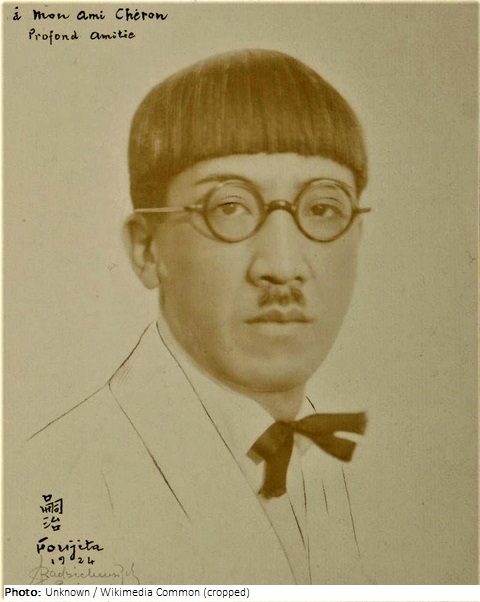Tsuguharu Fujita

Biographical information
| Roles | Referee |
|---|---|
| Sex | Male |
| Full name | Tsuguharu•Fujita |
| Used name | Tsuguharu•Fujita |
| Original name | 藤田•嗣治 |
| Other names | Tsugouharu Foujita, Tsuguji Fujita, Léonard François René Foujita |
| Born | 27 November 1886 in Shinagawa, Tokyo (JPN) |
| Died | 29 January 1968 in Zürich, Zürich (SUI) |
| NOC |  Japan Japan |
Biography
Tsuguharu Fujita was the son of a military doctor from a samurai family. He came into early contact with European culture and history at the home of his older sister. Fujita first took private lessons in painting and learned traditional nihonga painting at the Tokyo School of Fine Arts. This was followed by studies in Western (yōga) painting in 1905-10. The works of his first Japanese period were created in the post-Impressionist style, which was considered typical Western art in Japan at the time. However, all the paintings he submitted for the official Bunten exhibitions during this period were rejected. In 1912, Fujita married the art teacher Tomi Tokita but left her behind in Japan when he began his study trip to Paris.
Called “Foufou” in Paris, Fujita met Kees Van Dongen and Pablo Picasso (1881-1973) and his circle, and quickly made friends in the bohemian circles of Montmartre and Montparnasse. In 1914, Fujita briefly experimented with cubist reduction of the motif. In 1916 he decided to live permanently in Paris, which led to his divorce from Tomi by letter and a break with his family. The following year, he married the painter Fernande Barrey (1893-1960), who decisively promoted Fujita’s artistic work. From 1917, a long-term contract with gallery owner Georges Chéron (?-1931) provided him with a certain material security. A trip to Rome left deep impressions of antiquity, Byzantine, Christian, and Renaissance art. Around this time, Fujita developed a unique transparent painting style with a special technique. In 1919, he had a decisive breakthrough at the Salon d’Automne, of which he became a member.
Fujita’s paintings now fetched high prices and he could afford to live comfortably. In 1925, he was made a Knight of the Legion of Honor. He divorced his second wife, and a third marriage also failed. Tax debts forced him to travel the world having sales exhibitions, which also took him to Tokyo, where his works achieved great success in 1929. There, he also reconciled with his family. Accompanied by the young dancer and new partner Madeleine (Mady) Lequeux (1905-1936), he traveled to South America in 1930-33. However, she died drugged, drowning in the basin of their house at the age of only 31.
In 1933, Fujita returned to Japan, where Kimiyo Horiuchi (1911-2009), 25 years his junior, became his fifth wife. He remained with her for the rest of his life. Starting in 1938, he went to China for a year as a war painter during the Sino-Japanese War and returned to Paris in 1939. Because of the German occupation of France, he went back to Japan that same year. With the outbreak of war in the Pacific, Fujita was appointed chairman of the Army Art Association and worked on the production of war paintings. For this reason, he was criticized after the war and left Japan disappointed in 1949.
In 1955, Fujita was naturalized in France and later renounced his Japanese citizenship. Four years later, he was baptized a Catholic in Notre Dame Cathedral in Reims with the name Léonard. He then designed the interior of the Notre-Dame-de-la-Paix chapel there. After he died of cancer, he was buried in the “Fujita Chapel”.
Fujita created paintings and graphic works that were a mixture of Japanese prints and modern Western art and developed a style of his own. As an illustrator, he created woodblock prints, lithographs, and copper engravings for works by great authors. He authored numerous essays that were published after his death.
Referee
| Games | Sport (Discipline) / Event | NOC / Team | Phase | Unit | Role | As | |
|---|---|---|---|---|---|---|---|
| 1924 Summer Olympics | Art Competitions |  JPN JPN |
Tsuguharu Fujita | ||||
| Painting, Open (Olympic) | Final Standings | Judge |